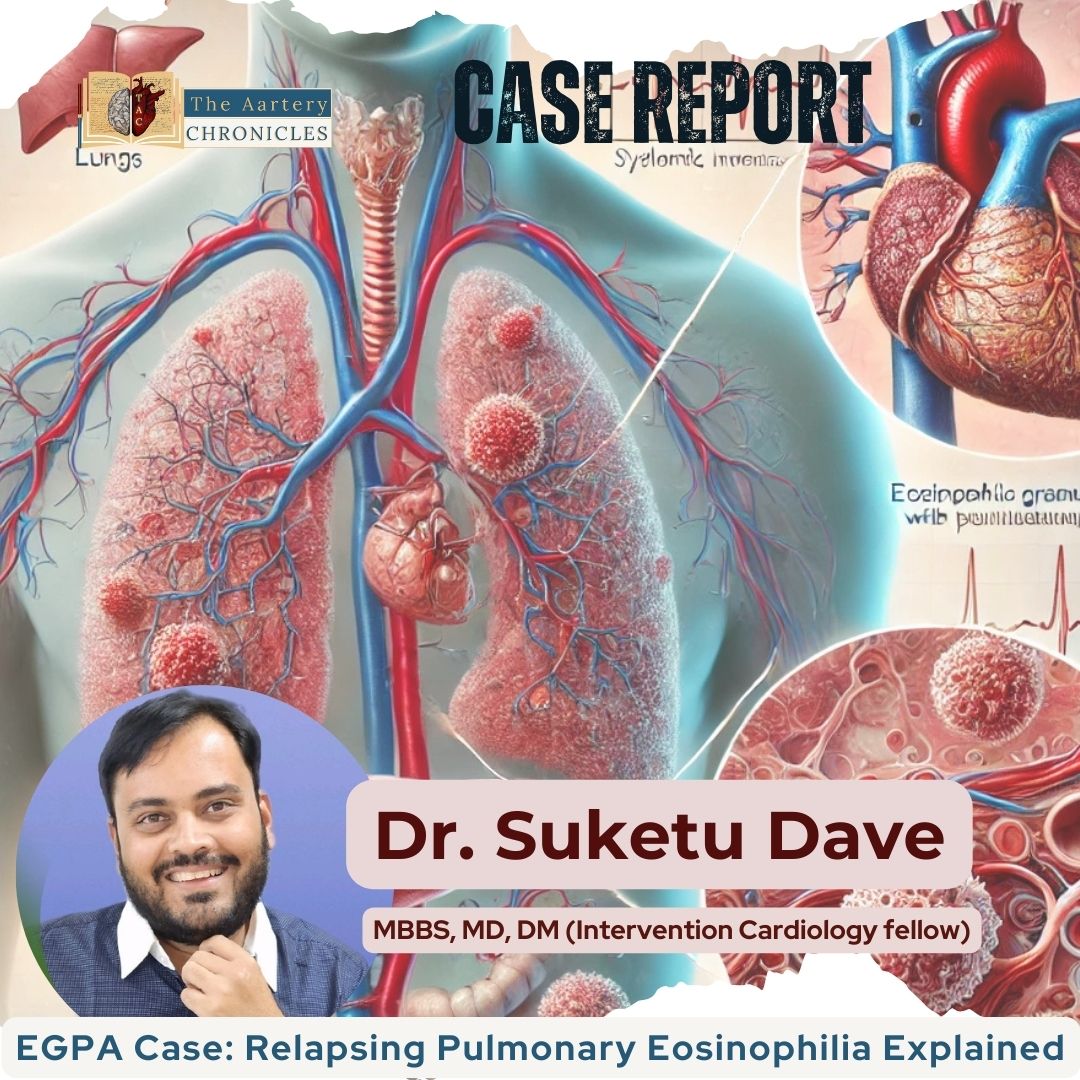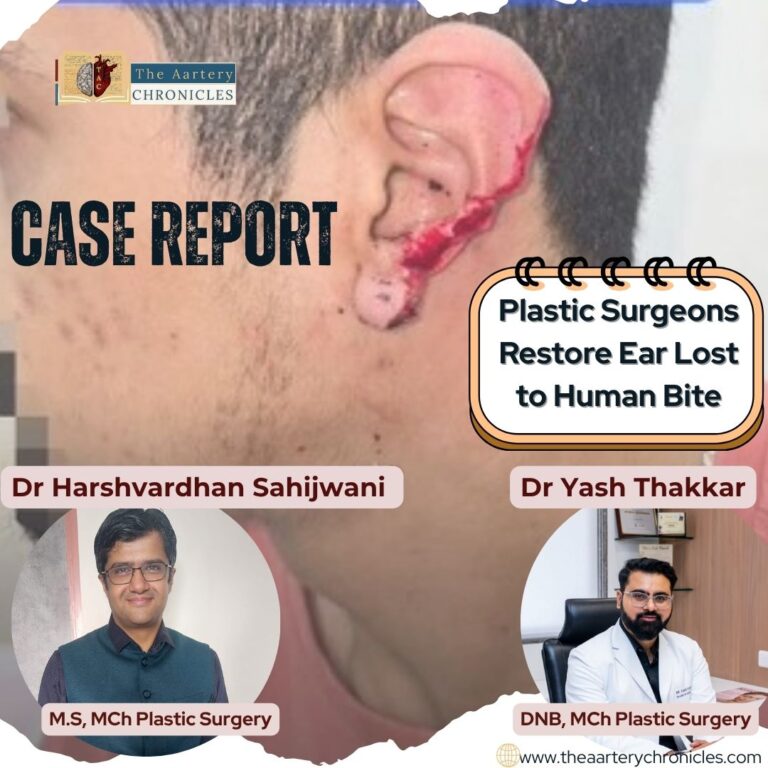

Relapsing Pulmonary Eosinophilia as the Initial Manifestation of Eosinophilic Granulomatosis with Polyangiitis (EGPA)
Abstract
Eosinophilic Granulomatosis with Polyangiitis (EGPA), formerly known as Churg-Strauss Syndrome, is a rare systemic vasculitis characterized by eosinophilia, asthma-like symptoms, and multi-organ involvement. We report a case of a 62-year-old male presenting with recurrent eosinophilic pneumonia, diagnosed as EGPA based on clinical and laboratory findings. The patient responded well to oral glucocorticoids, with a subsequent tapering regimen and initiation of immunosuppressive therapy to prevent relapse.
Did you know eosinophilic granulomatosis with polyangiitis (EGPA) can mimic common pneumonia and even relapse after treatment?
In this post, I’ll walk you through a real-world case of a 62-year-old male who presented with relapsing pulmonary eosinophilia, later diagnosed as EGPA. You’ll understand the diagnostic challenges, treatment protocol, and why clinical acumen is key when serology doesn’t give answers. If you’re a clinician or student, this case offers valuable insight into managing rare systemic vasculitis with lung involvement.
Case Presentation
A 62-year-old male with no prior history of allergic conditions presented with pneumonia-like symptoms. Differential diagnoses included Loeffler’s syndrome and tropical pulmonary eosinophilia. However, given the severity and chronicity of symptoms, vasculitis such as EGPA was considered.
Initial treatment involved prednisolone 60 mg/day, leading to complete clinical and radiological resolution within 10 days. However, upon discontinuation, the patient relapsed within 6 weeks, presenting with
- Wheezing
- Nocturnal coughing
- Persistent eosinophilia (>15,000 cells/μL).
High-resolution computed tomography (HRCT) showed diffuse interstitial lung infiltrates, suggestive of vasculitic involvement.
Autoimmune workup, including C-ANCA and P-ANCA, was negative. Given the relapsing course, high eosinophilia, and pulmonary infiltrates without prior asthma, EGPA was strongly suspected.
- The patient was reinitiated on prednisolone (60 mg/day), followed by a gradual taper, and azathioprine was introduced as a steroid-sparing agent.
Additional assessments ruled out renal, cardiac, neurological, and dermatological involvement. ECG, 2D echocardiography, and dobutamine stress echocardiography were normal. MRI was not performed due to cost considerations and lack of clinical indications.
Discussion
What Is EGPA (Eosinophilic Granulomatosis with Polyangiitis)?
Eosinophilic Granulomatosis with Polyangiitis, formerly Churg-Strauss Syndrome, is a rare systemic vasculitis that primarily affects small- to medium-sized vessels. It’s typically marked by
- Asthma
- Eosinophilia
- Multi-organ involvement
Treatment with Prednisolone 60 mg/day cleared Everything in 10 Days
Treatment with high-dose oral steroids led to quick clinical and radiological improvement, but the remission was short-lived.
Relapse & Red Flags: Eosinophils Back at 15,000
Wheezing, nighttime cough, and repeat HRCT showing interstitial infiltrates suggested a relapsing-remitting disease course consistent with vasculitis.
C-ANCA and P-ANCA Are Negative, Think Clinically
Serology was negative, but the combination of symptoms, age, and lung findings confirmed the clinical suspicion of EGPA
Why Vasculitis Was the Final Diagnosis
Asthma-like symptoms in a 62-year-old with no allergic history, extremely high eosinophils, and relapsing pulmonary signs pointed to EGPA.
Steroid Taper and Immunosuppressant: Long-Term Plan
The patient is now on a tapering dose of steroids and has been started on azathioprine for long-term immunosuppression to reduce systemic inflammation. Early diagnosis and long-term follow-up are crucial to minimising morbidity and mortality associated with EGPA.
Conclusion
This case highlights the importance of clinical intuition in diagnosing EGPA, especially when serological markers are absent. With early corticosteroid treatment and immunosuppressants like azathioprine, long-term outcomes can be improved. Always consider vasculitis in cases of relapsing eosinophilic pneumonia, especially when standard treatments fall short.
Dr Dave has been working as a consultant physician, Diabetologist, and intensivist at Kamubala Polyclinic Vadodara Gujarat. He is on the verge of completing his DM in Interventional Cardiology from the highly prestigious U. N. Mehta Institute of Cardiology and Research Centre, Ahmedabad, having secured an impressive All India Rank 5 in the DM Cardiology Entrance Examination.
Disclaimer: This case is provided by expert Dr. Suketu Dave. The opinions and recommendations shared are those of Dr. Suketu Dave and are intended for awareness purposes.









